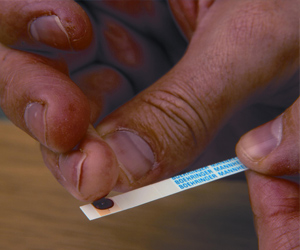Highlights
- Thalassemia major is an inherited blood disorder in which the body makes an abnormal form of hemoglobin.
- Iron accumulation in myocardial cells results in heart failure or fatal arrhythmia in patients with thalassemia major
- Anti-hypertensive drug amlodipine along with chelation resulted in effective reduction of cardiac iron
The clinical trial was conducted in partnership with researchers at the University of Campinas Blood Center (Hemocentro UNICAMP), Boldrini Child Cancer Center, and São Paulo Blood Center (CHSP), among others.
"The iron in red blood cells is normally reused when new red cells are produced, but transfusions introduce a lot of extra iron into the patient. The concentration of iron can double after ten transfusions," Fernandes said.
In Thalassemia major condition the body lacks mechanisms to excrete the excess iron, which builds up in the cells of several organs, especially the heart and liver. The chelating drugs help treat the accumulation process; the chelating agents bind with the excess iron to produce compounds that are excreted in urine or feces.
"It occurred to us that drugs capable of blocking the calcium channel could also prevent NTBI from entering the heart and therefore increase the efficacy of chelation therapy," Fernandes said. "Calcium-channel blockers are widely used to treat problems such as high blood pressure and irregular heart beat."
Depending on the iron concentrations found in their organs, each group was subdivided into those with and without initial cardiac iron overload. MRI scans were repeated a year later. The study results revealed the following
- Myocardial iron concentration drops 21% in patients with initial iron overload who were treated with chelation plus amlodipine
- Whereas it increased by 2% in those with initial overload who were treated with chelation plus placebo
Thalassemia:
Thalassemia results in a low red blood cell count, which in turn leads to chronic anemia. Patients with thalassemia require blood transfusions every three to four weeks. Thalassemia is of two types
1. Alpha thalassemia occurs when the genes related to alpha globin protein are missing.
2. Beta thalassemia occurs when genes related to beta globin protein are affected.
Hemoglobin is made up of alpha and beta globin proteins.
Forms of Thalassemia
Thalassemia Major occurs when the child inherits two mutated genes one from each parent.
Thalassemia Minor occurs if the child receives faulty gene from only 1 parent.
References
- Juliano L. Fernandes et al. A Randomized Trial Of Amlodipine In Addition To Standard Chelation Therapy In Patients With Thalassemia Major; Blood; (2016) DOI: http://dx.doi.org/10.1182/blood-2016-06-721183
- General Information About Thalassemia - (https://medlineplus.gov/ency/article/000587.htm)
Source-Medindia









